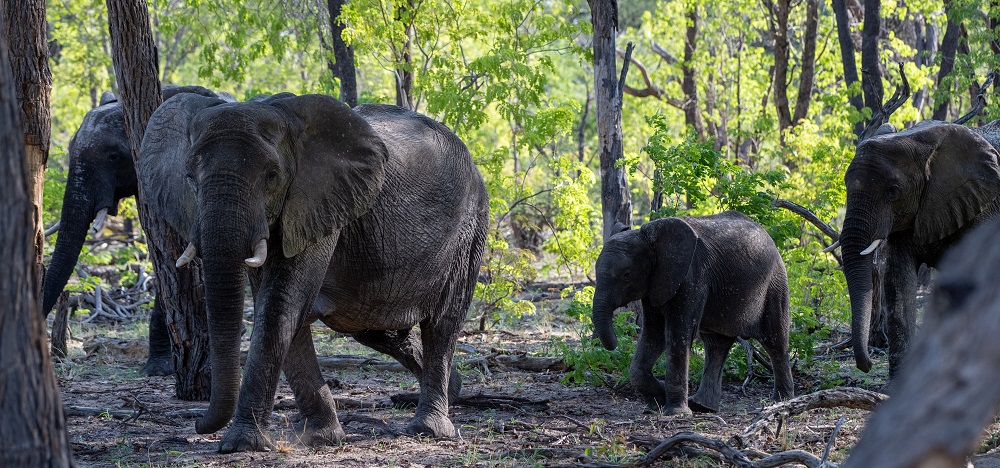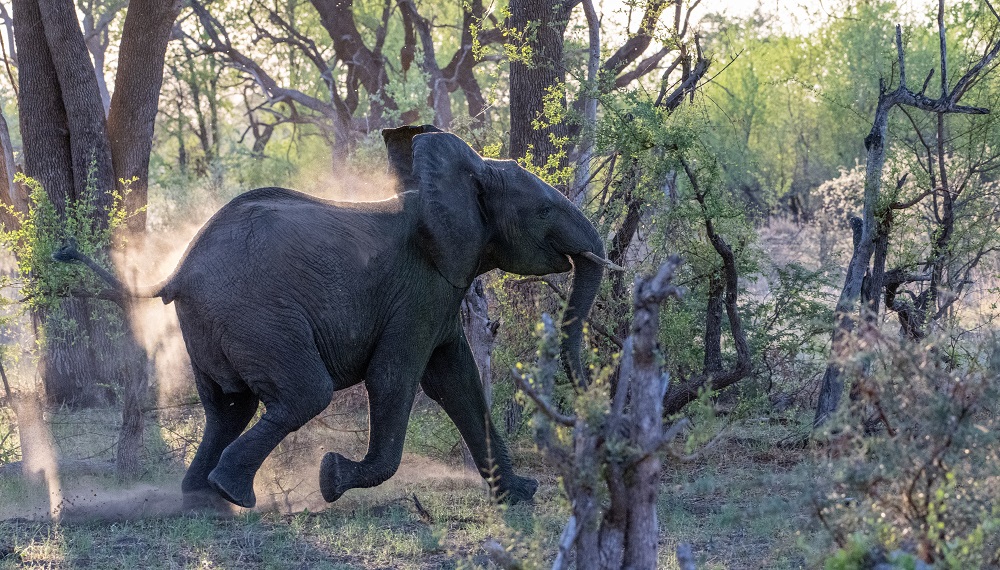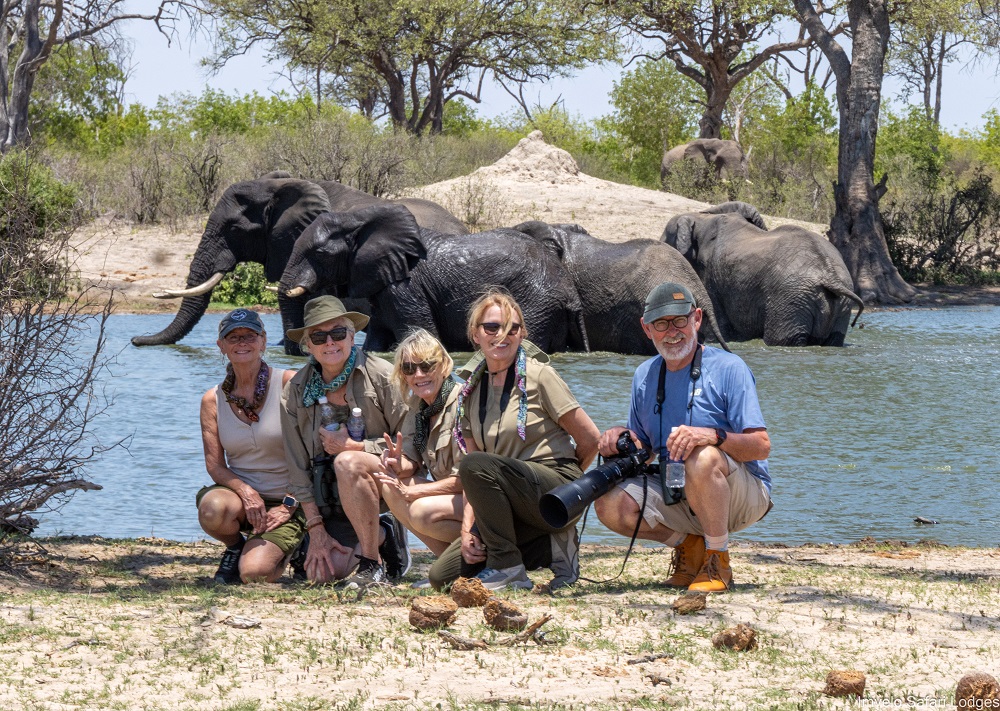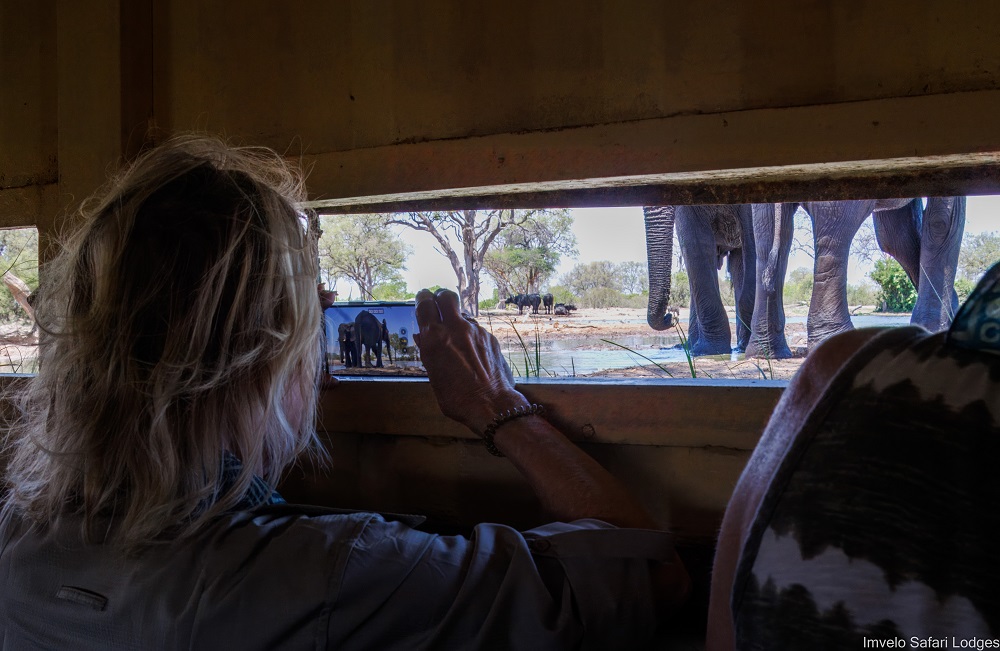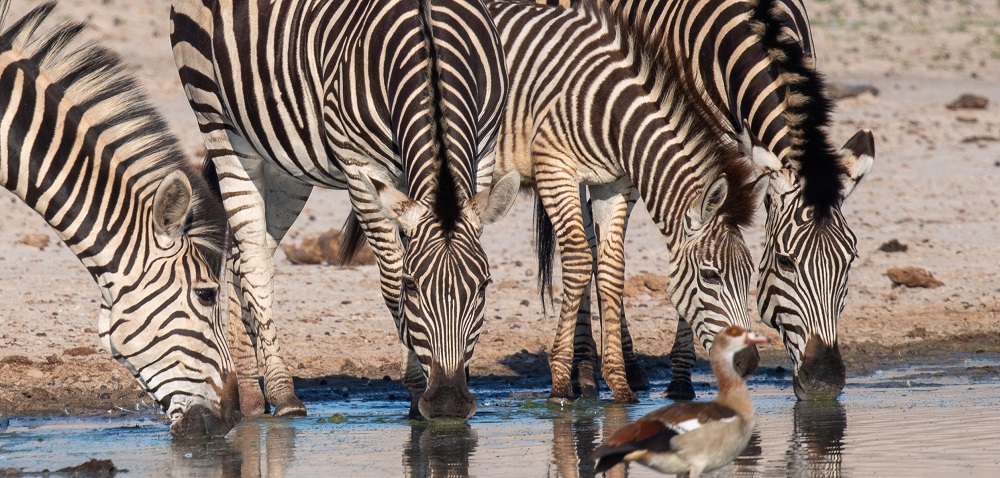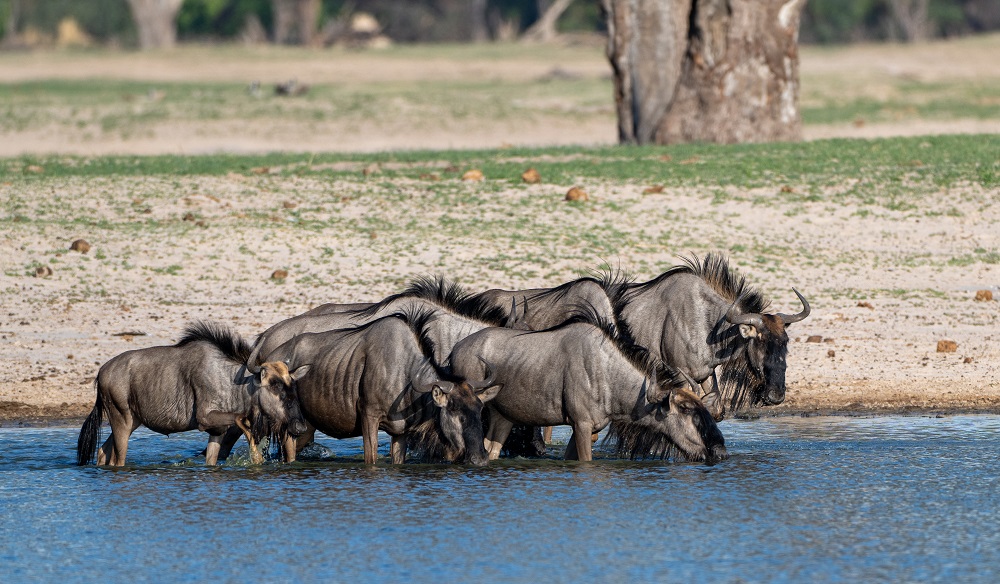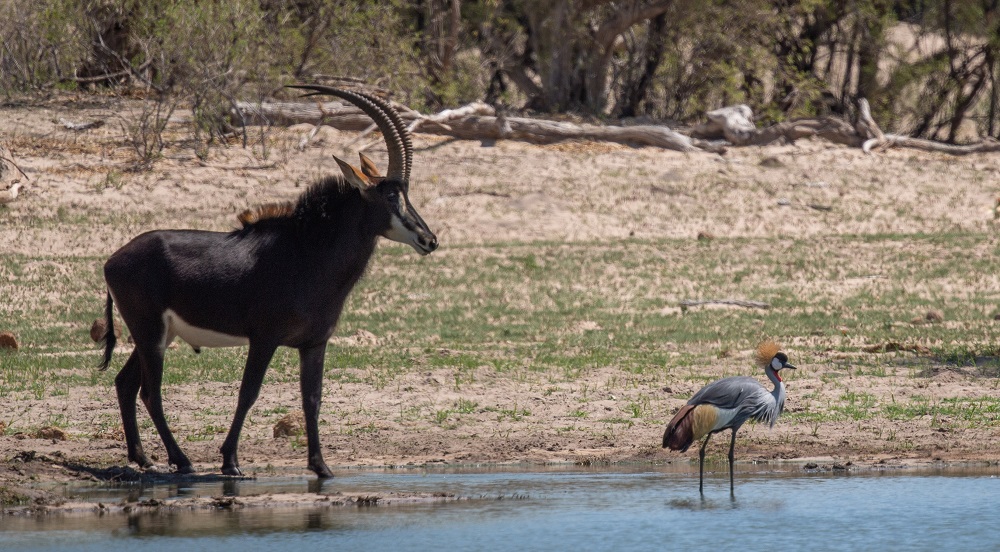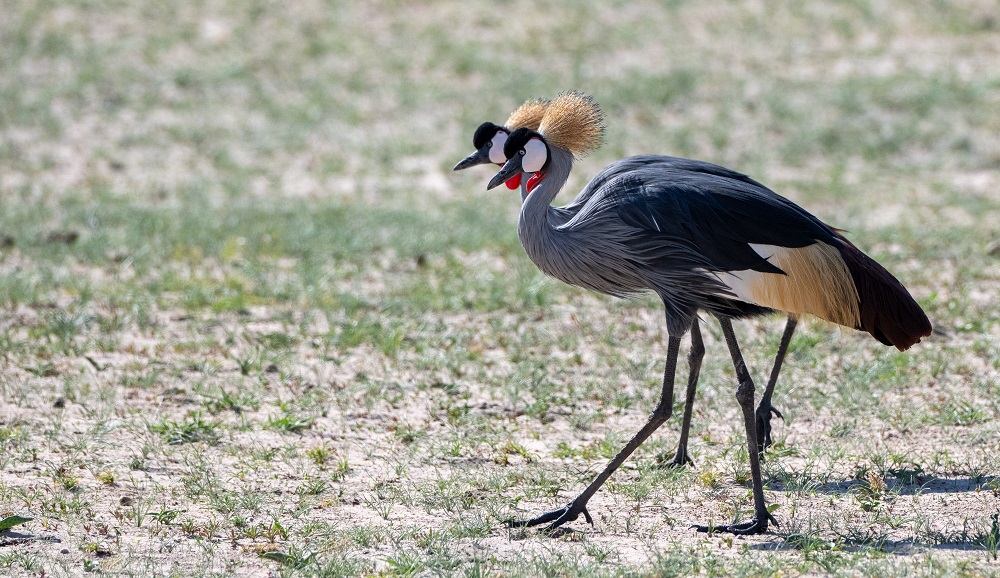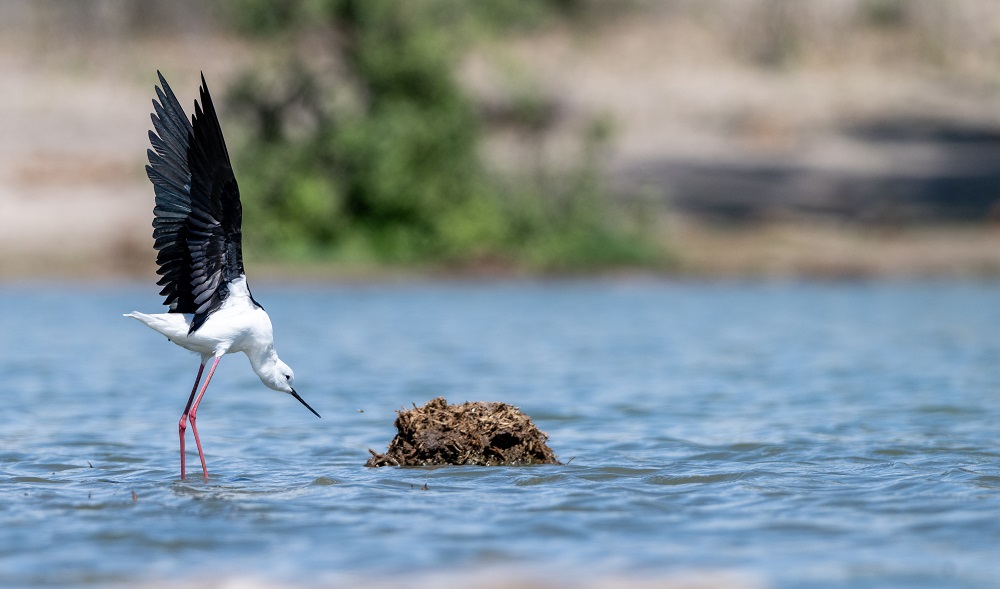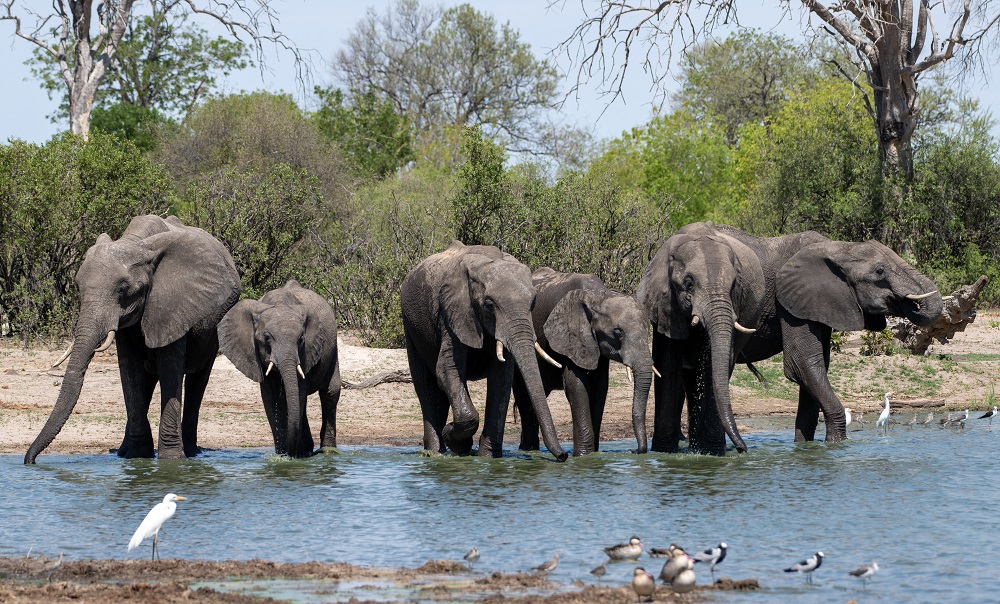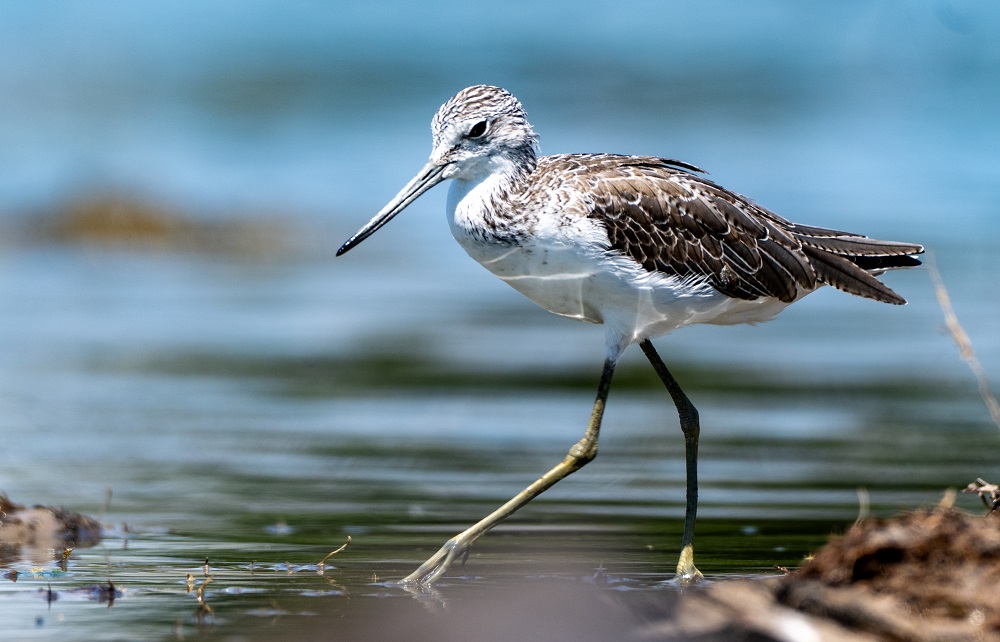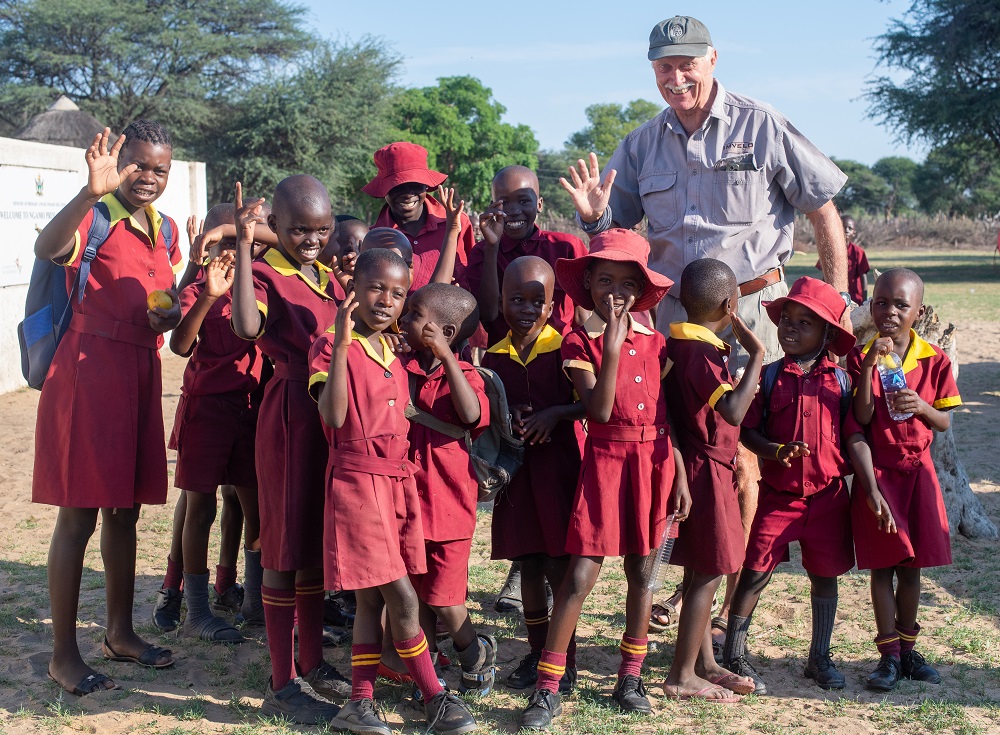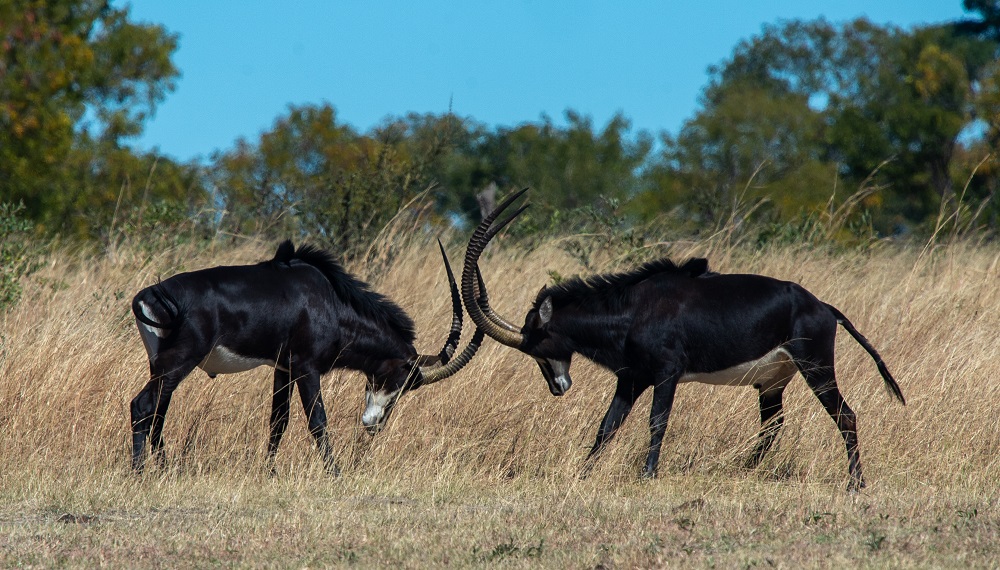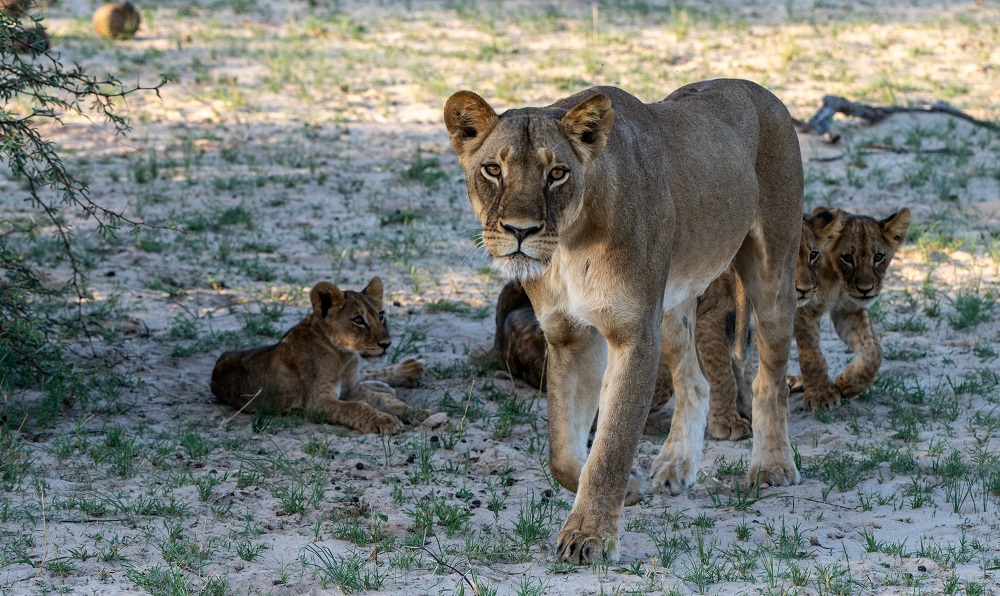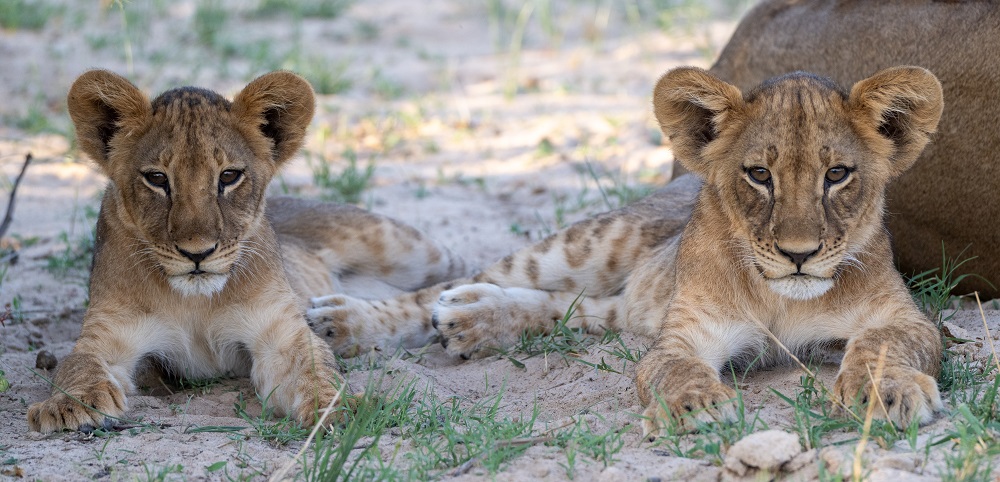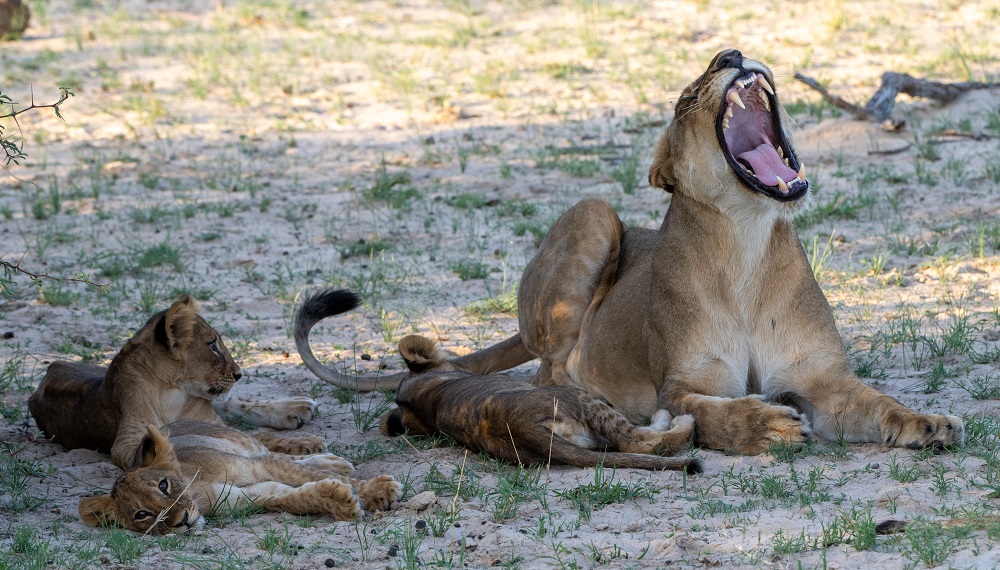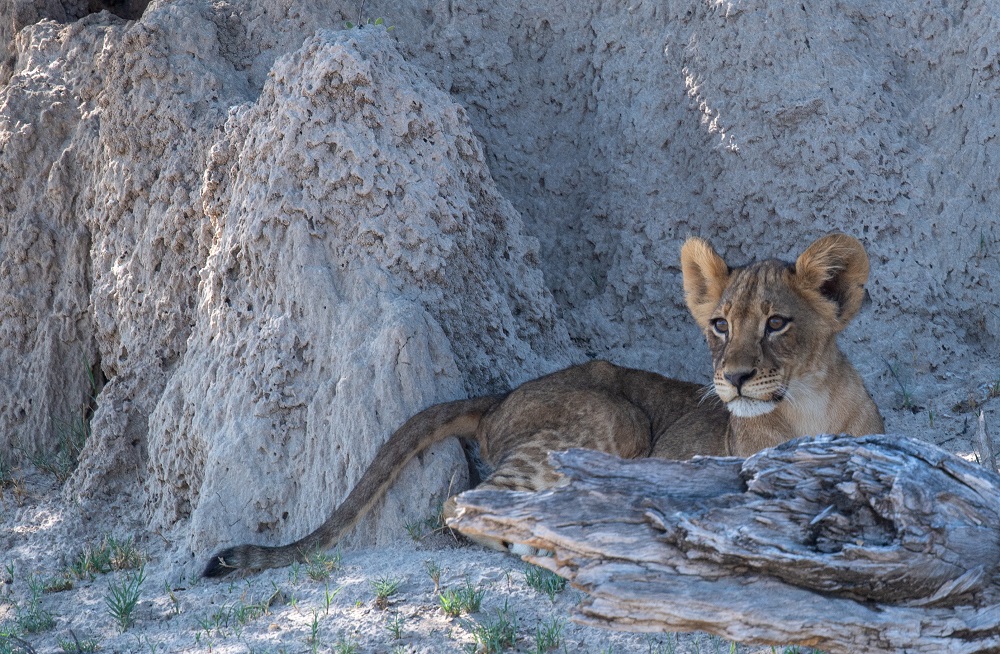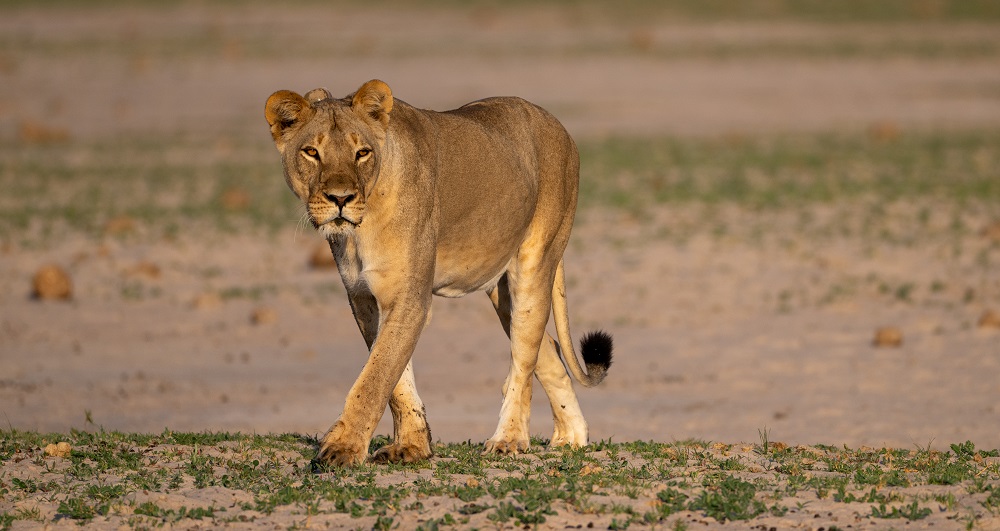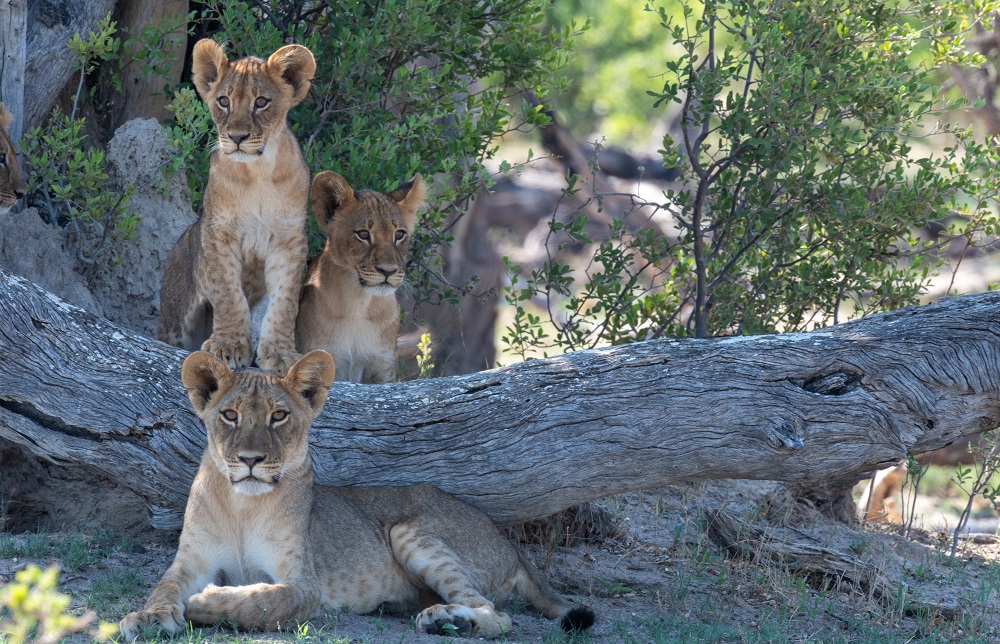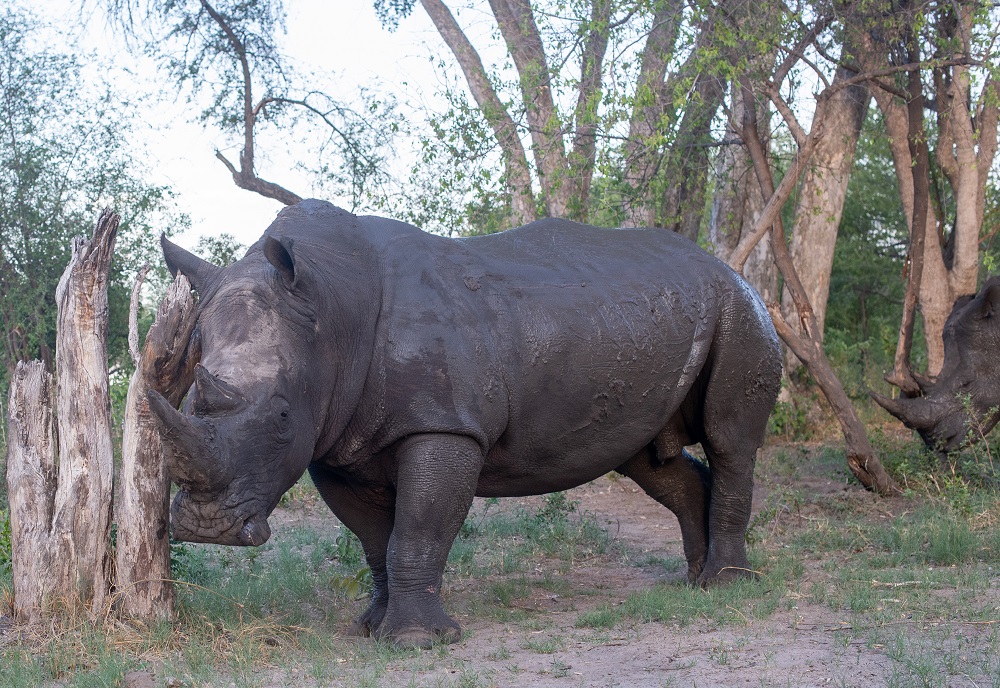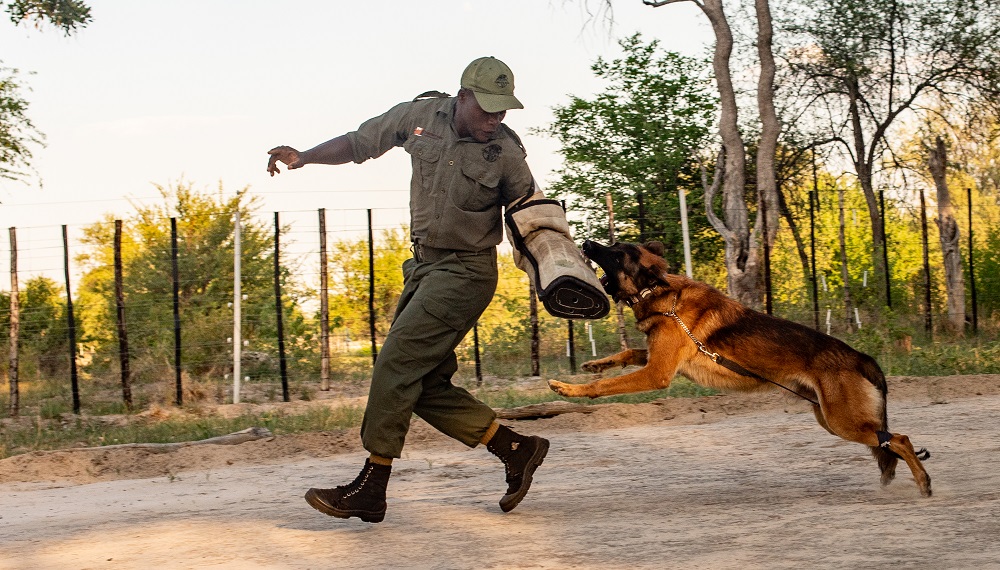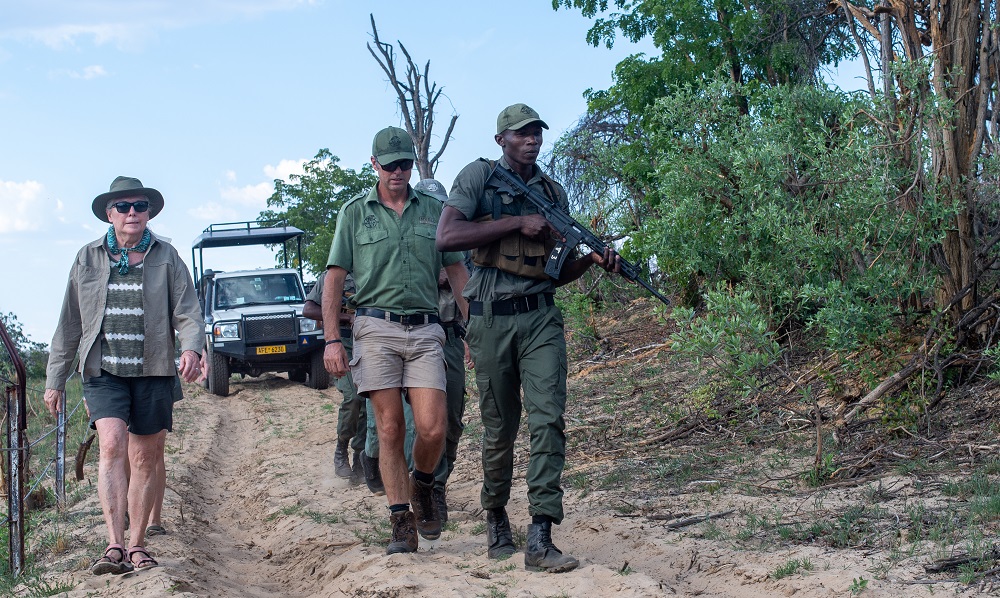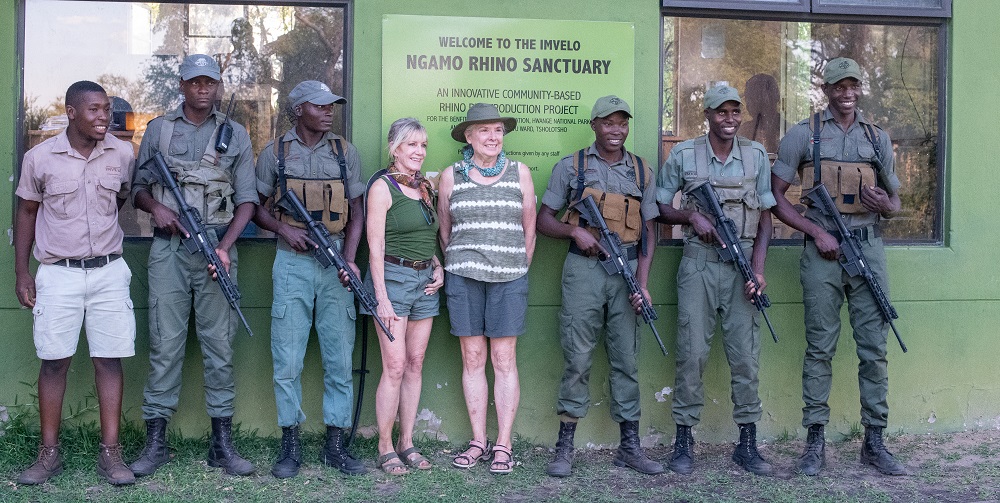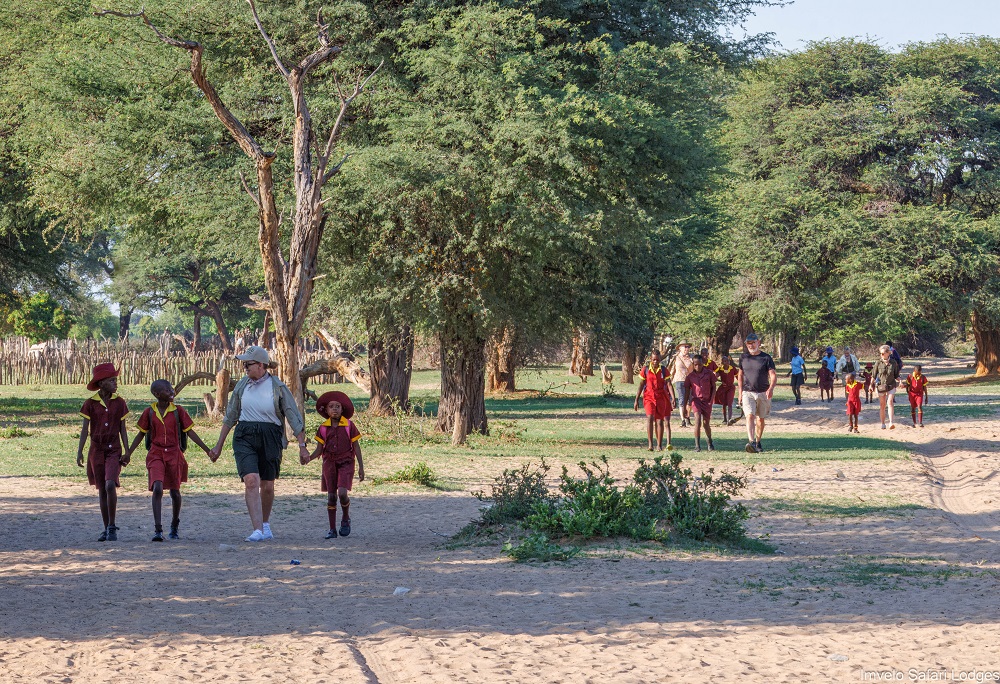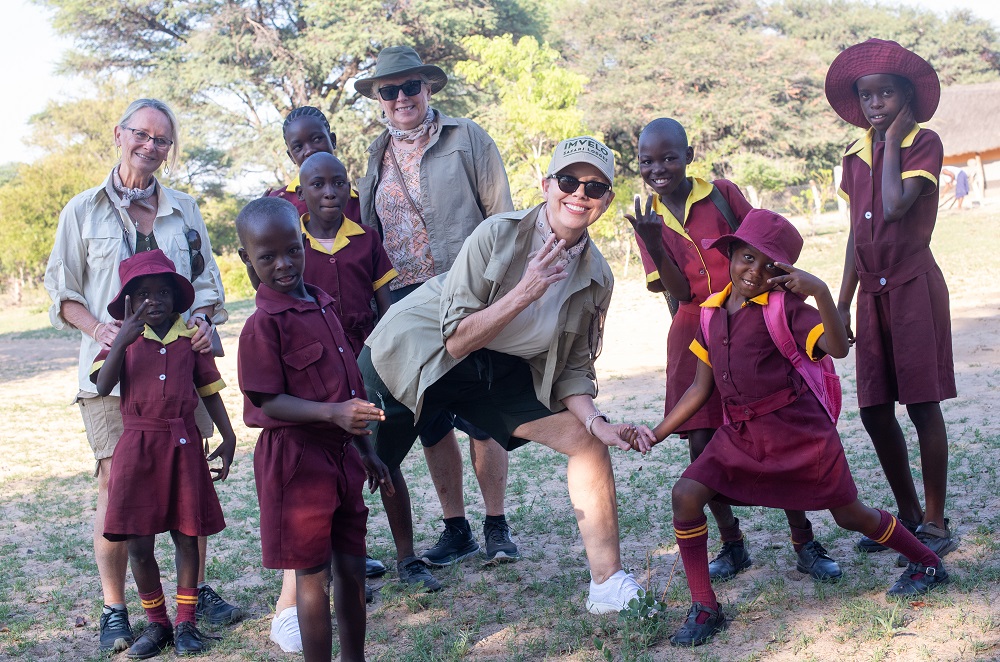Late one morning, early in our December 2024 Zimbabwe safari, we spotted a small breeding herd of elephants enjoying the shade and the foraging opportunities in the interior of a beautiful teak forest in the far southern area of Hwange National Park. “Feel like taking a walk to get a little closer to them?,” Camelthorn camp head guide Vusa Ncube asked. It was unanimous. Not five minutes later we were out of the Landcruiser and on the forest floor, quietly making our way in single file towards the elephants. Vusa was leading the way, rifle in hand, every now and then checking the direction of the wind by shaking a small bag filled with leadwood ash. Even an untrained observer could see that we were walking directly upwind, to prevent our scent from reaching the elephants’ super sensitive smell detection organ. These gigantic lumbering mammals have the strongest sense of smell of any animal. Twice as good as the best bloodhound out there, and five times better than the world’s top sommeliers.
Remaining undetected (the elephants’ eyesight not being good at all), we approached to within 20 meters or so, keeping our bodies mostly hidden behind vegetation and tree trunks. Even for seasoned safari pros like Kathy and myself it was an exhilarating moment. For the other guests – on just their second day of being in the African wilderness – it was a highlight of their entire stay, I am sure.
Standing there quietly observing the elephants tearing off huge chunks of vegetation with their prehensile trunks, over and over again, hearing them communicating with each other in soft rumbles while flapping their massive ears to dissipate the heat, took us right out of our element. Into theirs. We were on foot in ‘Big Five’ terrain. Vulnerable and exposed. As close to nature as we might ever be. For just a few minutes there we were in the footsteps of our ancestors, feeling exactly what they would have felt. A little bit of fear, a lot of respect and a palpable sense of being one with the natural environment.
On the way back to the vehicle a young elephant bull appeared as if out of nowhere from stage left and for a minute or two – particularly when it looked as if the animal had picked up our scent – our hearts beat in our throats. All ended well and we lived to tell the tale. Our ancestors would have been proud. And I’m sure they would have been envious of our sturdy footwear and our nifty Swarovski binoculars.
Spending four days at Camelthorn Lodge in the southern Hwange area early last December underscored a lot of what we’ve been telling prospective visitors over the years. And then some. There are just so many reasons to include Hwange in a southern African safari.
Here are a few:
The elephants
Particularly for first time visitors, no African safari is complete and satisfying without a truly rewarding elephant experience. By that I mean more than just observing a few elephants standing around browsing or trundling through a forest. I mean a ‘blow your socks off, bring the house down’ type of elephant experience. Like seeing dozens or even hundreds of elephants in one area, ideally coming to water close to a spot from where you can observe them safely.
Hwange National Park is just such a place. The park and surrounding areas are home to around 45,000 elephants, all coming to the water regularly in the dry months. Even in the early December time frame – when many of them typically disperse after the first rains – we enjoyed several opportunities to observe elephants close up. The most memorable occasion being sitting in a sunken hide at Stoffies Pan, waiting for the elephants to come to us. A pleasant change from bumping around on a game drive. We had hardly taken up our positions in the sunken hide by late morning before a small breeding herd of elephants approached rapidly from the left.
It got really quiet really fast inside the blind as the elephants got closer and closer. We practically held our collective breath as the herd stopped near the point where the clean, fresh borehole water emerged. Using their trunks, they sucked up the fresh water by the trunkful, guzzling as much as 40 gallons in less than 5 minutes. An elephant drinking is quite the spectacle. It’s all action and noise, with several moving parts – and invariably ends with the elephant blowing bubbles or amusing itself by squirting water around when it has had its fill. The young elephants are even more entertaining as they frolic and push each other around. On this occasion a couple of young bulls rushed into and out of the water just like your average teenage boys might do, literally trying to make waves and attract attention.
Stoffies hide provides jaw-droppingly close and intimate looks at elephants coming to water and it is a spot where you will definitely want to spend some time while visiting Hwange in the dry season from about May through October. The borehole and pump supplying Stoffies pan were recently upgraded and it now holds more water than ever before, even right into the teeth of the dry season.
To be sure, elephants are not the only animals showing up to drink at the Hwange waterholes. Over the course of the few days we spent in Hwange this time around we saw a sable antelope, several buffaloes, a rare side-striped jackal, giraffes, impalas and a multitude of bird species come to the water. The elephants almost always steal the show, but the other visitors and the resident hippos keep things interesting. Literally never a dull moment.
The guiding
The guiding in Hwange and elsewhere in Zimbabwe is among the best in Africa with the Zimbabwe professional guiding licence setting the gold standard for the rest of the continent. So you will be with guides who have had as much as seven years of in-depth instruction and learning under the supervision of a seasoned mentor. The Zimbabwe guides are superb all-round naturalists and because of their intensive qualification process they are permitted to walk with guests inside of the national parks. In many other parts of Africa the opportunities to walk inside national parks are limited by the availability of qualified walking guides and national parks rangers.
We were fortunate to work with both Camelthorn head guide Vusa Ncube and his guide training mentor Mark (‘call me Butch’) Butcher, Imvelo’s Managing Director. Vusa is an ebullient, knowledgeable guide and clearly an all round good guy. With him around, we felt safe and cared for from the word go. Even when we ventured out of the vehicle to take a closer peek at the elephants browsing, we could tell that Vusa was not going to get us into a potentially dangerous situation unnecessarily. Sometimes the unexpected can happen but when you are out on foot with a ‘full pro’ Zimbabwe guide you can rely on their experience and their knowledge of animal behavior to keep you safe.
The big cats and more
Beyond the elephants, the many giraffes, eland, zebra and other plains game and amazing bird life, when you find yourself in Hwange there is always a chance to see one or more special mammals such as lions, African painted dogs, cheetahs, and two unique species of antelope, sable and roan. These animals can be seen elsewhere but Hwange is one of the best places for sable and roan, and it’s a good bet for the painted dogs and cheetah as well.
Lions are regularly seen in Hwange. This time around, we would cross paths several times with a pride of 10 lions with 7 youngsters of several litters. On our very first outing, the three females were in a hunting mode, targeting some wildebeest. It was fascinating to see the females skulking about, alert as could be, with one of them being pre-positioned to ambush one of the wildebeest should they inadvertently venture too close. Unfortunately it did not pan out with the wildebeest either smelling or seeing one of the lions and taking off into thicker bush. We were as disappointed as the lions must have been.
We found the lions again later in the day and I managed a few good exposures of three or four of the cubs bunched together at the base of a termite mound with a tree log positioned right in front of it. I just knew one or more of them would get on it, and bingo… The following day we found a solitary female lion in an open area where – for a minute there – she thought she had a chance to take down some wildebeest. The wildebeest spotted her soon enough but she then proceeded to position herself nicely on a termite mound. The photographer in me would have preferred a chase sequence, but happily settled for a nice profile shot.
The white rhinos
If you spend time at Imvelo’s Camelthorn or Bomani camps, there’s an added bonus to being in Hwange: an included visit to the Ngamo Community Rhino Conservation Initiative (CRCI). This project places local communities at the heart of the conservation effort and engages them as rhino custodians. Already, the revenue from guests visiting the sanctuary is directly benefiting the community, such as by funding a health clinic.
When visiting the Rhino Sanctuary guests are allowed to and in fact encouraged to approach the two adult white rhinos on foot. An awesome experience. During our visit, we also observed two anti-poaching demonstrations. The first one involved Ragnar, a Belgian Malinois who was only too keen to run down a volunteer perpetrator wearing a protective sleeve. We also observed and participated in a simulated ‘jungle lane’ search and engage mission. With a crack squad of anti-poaching personnel engaging in a rapid pursuit scenario, briefly pausing to aim and hit pop-up targets, using a .22 caliber rifle. The accuracy and precision were impressive. Guests are welcome to participate in this activity to the degree they feel comfortable with; two of our party tried their marksmanship with some success!
Observing the gargantuan white rhinos – who weigh up to 5,000 pounds and more – at close range, on foot, supercharges their prehistoric appearance. One has to wonder how it is even possible for something so massive and cumbersome, so seemingly helpless, to continue to survive in an avaricious world where its horn has been imbued with spurious benefits. Sadly we may very well be the last generation to see rhino in the wild in more than just a few highly protected pockets.
A sense of community
From Camelthorn and Bomani – and also from the Wilderness properties in southern Hwange – you can do a 2-hr visit (in between game drives) to Ngamo village, for a meaningful yet relaxing cultural experience. You can spend a bit of time chatting with Johnson Ncube, the headman, who will show you around, likely invite you into his home and time permitting (if the school is in session) you could have a peek into a classroom. I found it to be a good ‘slice of life’ experience, and it didn’t feel forced in any way. A highlight was walking to school – or at least part of the way – with a few of the kids. Instant friends.
Camelthorn Lodge – where we spent several nights – is definitely in need of some sprucing up; we were happy to see someone on site, getting that project started. The brick & mortar rooms are quite big and comfortable, the food is perfectly fine and tasty and the staff, starting with effervescent camp manager Siboe Sibanda, is keen to make your stay as nice as it can be. I quite like the paths between the rooms which wind their way through a dense forest. In the summer heat it was quite a workout walking from one end of the property to the other and back, repeatedly, while keeping an eye out for white rhinos.
Prospective visitors beware: Hwange is a land of extremes. As brutally hot as this area can get in October (and through early December as we found out, getting there just as a heatwave set in), temperatures can drop to near freezing in mid-winter months like June and July. Prepare accordingly.
Getting there
On startup it sounds like an overgrown Harley Davidson motorbike. Getting into and out of it is a bit of an adventure. The luggage compartment is barely 10 inches high and holds about as much as a good sized wheelbarrow. I’m talking of course about the Cessna 206 Stationair which unexpectedly turned out to be our mode of conveyance for the one hour flight from Victoria Falls to Camelthorn camp in Hwange.
It has been a while since Kathy and I had flown in a 206 but it started to feel quite familiar, quite soon. The noisy take-off, feeling the power of the 310 horsepower Lycoming engine and a slow ascent to around 7600 feet above sea level where we spent the next 55 minutes or so. We reached a respectable maximum cruising speed over 150 mph, maybe touching 185 on the slow descent into the Bomani Airstrip. All in all a fun ride.
If you have misgivings about tiny planes, fear not; light air transfers from Victoria Falls to Hwange are usually done in the bigger (12-seater) Cessna 208 Caravan. The work-horse of the safari industry in Africa, this single turboprop aircraft is ideal for flight-seeing with its underwing fuselage and its ability to easily negotiate short take-offs and landings on rough bush strips.
Hwange can also be reached by road on a 3-hour plus road transfer on a road which is not nearly as good as it used to be. It is also heavily used by big trucks, so best avoided. We do recommend including a ride on Imvelo’s Elephant Express rail service along one of the longest straight stretches of track in the world, if transferring from one of Imvelo’s southern Hwange properties (Bomani and Camelthorn) to their property in the north-central part of the park, Nehimba. Best done under cool weather conditions, the open rail car serves as a pretty good mobile game-viewing platform with species such as elephants and giraffes seen regularly, together with several antelopes and the occasional predator. Definitely a fun time for the kids!
For suggestions on how to include one or more Hwange camps in your Southern Africa itinerary – and to learn more about the best time of the year for the area – email Lyndon at lyndon@fisheaglesafaris.com. We can also be reached by phone at 713-467-5222. Leave a message with the answering service and one of us will call you back.


